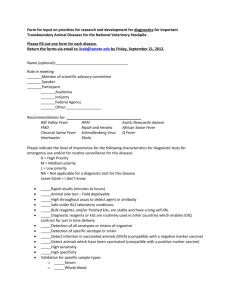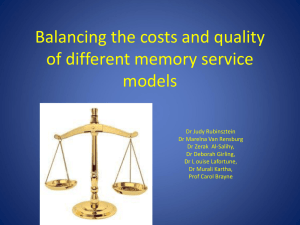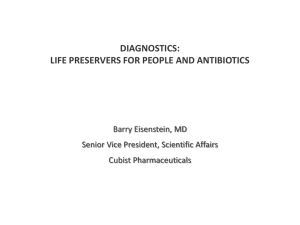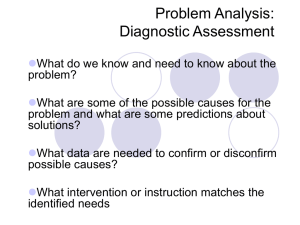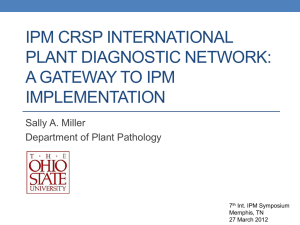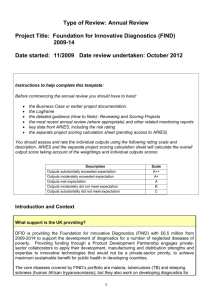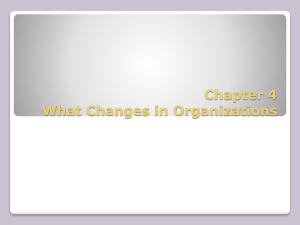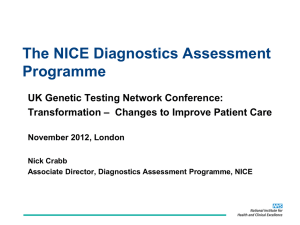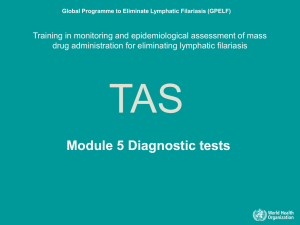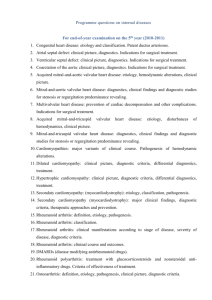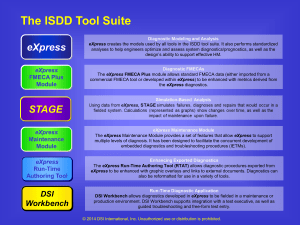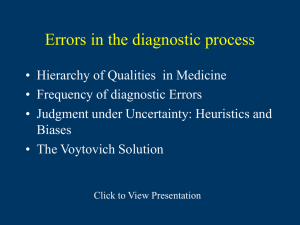Diagnostic Assessment Introduction PPT
advertisement
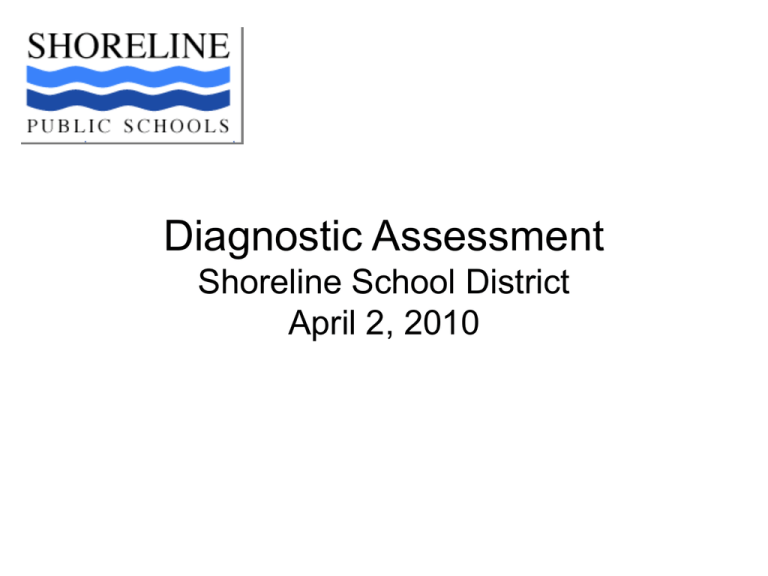
Diagnostic Assessment Shoreline School District April 2, 2010 Purpose of Workshop • To clarify the role of diagnostic assessments in the RtI model; • To review our current use of diagnostic assessments in the district; • To discuss our next steps in using diagnostic assessments. The multi-tiered model of assessment If not, either modify or change intervention Universal Screening (all students) Who is at-risk? Progress Monitoring (only at-risk students) Is what we are doing working? If yes, either continue intervention as is or discontinue Diagnostic Assessment (only at-risk students) Why are they at-risk? Intervention Design Universal Screening • Administered to ALL students • Quick, low cost, repeatable, and test age appropriate skills • Flags students in need of additional diagnostic assessment • Screeners themselves are NOT diagnostic Examples of Universal Screeners • DIBELS • easyCBM These serve to flag students but do not alone tell you what the instructional deficits or needs are of your individual students Diagnostic Assessment • Diagnostic assessments are focused and provide direction. This type of assessment must tell us what exactly should be worked on to achieve progress. • A student is flagged through DIBELS, what then? Need more data to identify what the issue/problem area is and how to support that student. Purpose of Diagnostic Assessment • A skill specific assessment designed to assist in matching the correct intervention with the individual need of the student • Turn and Talk: What skills are embedded in reading and math? What questions do diagnostics help us answer? • In what area(s) does this student need targeted intervention? • What exactly is preventing this student from adequately progressing in a specific area? Imagine… • Taking your car into a mechanic and telling them it isn’t running right. They start to change things that typically contribute to a car not running right -- spark plugs, carburator, even generator -- but without performing any diagnostics to hone in on the problem. The hospital… The place for diagnostic assessment in our ER model • What if you are still ill after leaving ER, going home, taking aspirin, resting and drinking fluids? – Tier 1 intervention didn’t apparently work and you feel worse with fever continuing – What’s next? Reading Diagnostics • Administer follow-up testing: – – – – QRI DRA CORE Have student read to teacher with book off shelf (look/listen for specific reading difficulties) – Purpose is to: • Validate or counter findings from screening • Clearer picture of student’s reading strengths/weaknesses • Evaluation of the five essential reading components – Phonemic awareness; phonological processing; fluency, vocabulary comprehension Purpose of Math Diagnostics • Deeper analysis of why the student is having problems with math: – Adequacy of math concept vocabulary – Adequacy of prerequisite computation skills – Ability of a student to decipher and solve a math word (application) problem What other math skills did you discuss earlier? Math Diagnostic Activity: Playing Sherlock Holmes You be Sherlock Holmes and find the miscue trends. I. 14 II. 23 III. 32 +17 -14 x12 211 11 64 32 96 • When this student adds, (s) he….. • When this student subtracts, (s) he…. • When this student multiplies (s) he… • During diagnostic assessment, we focus on the miscues, not the number correct. Written Language Diagnostics • Focus on identifying source of writing difficulty – Handwriting/letter formation – Writing fluency – Proper use of conventions – Syntactic maturity (e.g. use of more complex words or varied sentence starters) – Semantic maturity (sentence sophisticationlength) – Flow (transitions) – Organization/planning How are you using diagnostics? 1. What tools are you using? 2. How do you share the information? Role of RtI Leadership Team Create and evaluate building systems • Identify: – Diagnostic tools you will use. – Who will administer tools? – Who will track the data? – How the data will be shared and used to make instructional decisions. – The role of SSTs/A Teams/Kid Councils, PLC/Grade Level teams in process What is our plan for the future in Shoreline? • Our Math Screener is easyCBM and our progress monitoring tool is easyCBM • We are exploring math diagnostics attached to curriculum adoption as well as something more general (MAP?) What is our plan for the future in Shoreline? • Reading Diagnostics: – Use of DRA and QRI • Title/LAP teachers are a key resource • Share tools and strategies across the district (Title/LAP teachers, principals, Instruction Staff) Resource • www.interventioncentral.org Exit Slips • What are the benefits of using diagnostic assessments? • What are the barriers/challenges in using diagnostic assessments?
